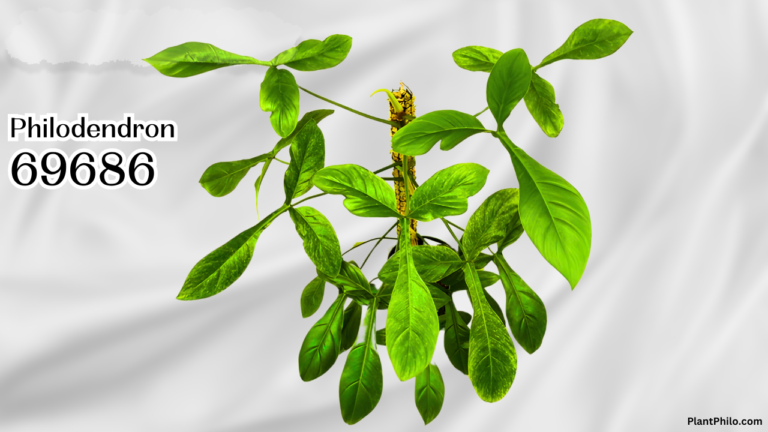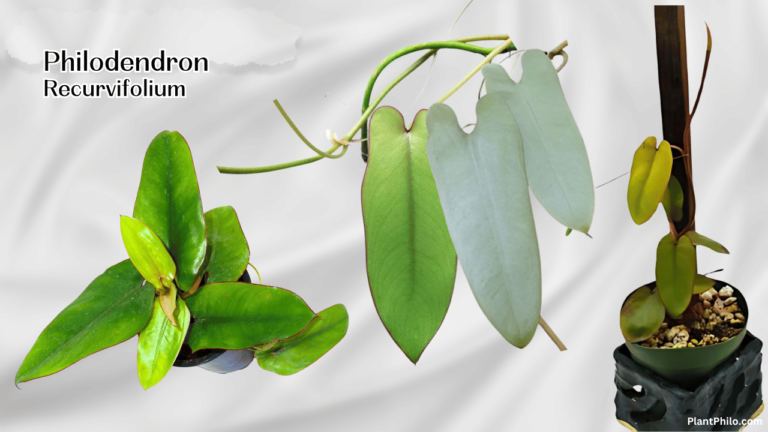How to Prune Pink Princess Philodendron for Healthy Growth and Vibrant Foliage
When I want my Pink Princess Philodendron to look its best and stay healthy, I know that pruning is key. Pruning this plant means cutting back the right stems to encourage more growth, stronger leaves, and brighter pink coloring.
This is something I can easily manage at home with some simple steps.

Knowing where and when to make cuts makes all the difference. I look for stems that have at least two or three nodes, and I try to cut just above a healthy leaf or a spot where I want new growth.
This way, I’m not just keeping my plant neat—I’m helping it grow even better. For more details on the best time and method, I often check guides like this one about how to prune Pink Princess Philodendron.
Every cut helps shape my plant, keeping it full and colorful. It’s rewarding to see new pink leaves appear after a good trim.
With a little practice, pruning can be one of the easiest ways I keep my Pink Princess thriving.
Essential Tools and Preparation

Before I start pruning my Pink Princess Philodendron, I gather my tools and make sure everything is clean. I also carefully check my plant so I know exactly which parts I need to trim and which sections to leave untouched.
Choosing the Right Pruning Tools
Using the correct tools matters for the health of my plant. I pick a pair of sharp, clean pruning shears or scissors.
Dull blades can crush stems, causing damage and encouraging disease. I always avoid using household scissors that might not make clean cuts.
For larger or thicker stems, I use bypass pruners because they make more precise cuts. Smaller stems or leaves can be trimmed with simple garden snips.
If I need to reach deep into the plant, I pick tools with longer handles for better access. Here’s a quick list of the tools I keep on hand:
- Sharp pruning shears
- Small garden snips
- Bypass pruners (for thick stems)
- Gloves (to protect my hands)
Sanitizing Equipment
Before I cut anything, I always disinfect my tools. Dirty blades can transfer bacteria or fungus from one plant to another.
I use isopropyl alcohol or a diluted bleach solution (1 part bleach to 9 parts water) to wipe down the blades. I let my tools dry before use, making sure there’s no residue left that could harm the plant.
If I make several cuts, I pause and wipe the blades between cuts, especially if I notice any diseased plant parts. This simple habit helps protect the Pink Princess Philodendron from possible infection.
Identifying Healthy and Unhealthy Growth
I take time to study my plant and spot which leaves and stems show strong growth and which do not. Healthy leaves are firm, vibrant, and have a good blend of green and pink.
Unhealthy parts may look yellow, mushy, or show signs of spotting and browning. I look for leggy stems that make the plant look uneven, as well as dead or yellowing leaves at the base.
These are good candidates for trimming. According to experts, removing unhealthy or overgrown sections helps encourage new, healthy growth.
I always try to keep more of the variegated pink and green leaves, since these are the most attractive features of the plant.
When and How to Prune Pink Princess Philodendron

Pruning Pink Princess Philodendron keeps the plant healthy and encourages new growth. Correct timing, careful cutting, and good handling of sap make the process safer and more effective.
Optimal Timing for Pruning
I recommend pruning the Pink Princess Philodendron in early spring. This is when the plant is about to start its main growing season.
Pruning at this time helps to produce more leaves and encourages vibrant colors. If the plant is overgrown or looks unhealthy, it is still okay to prune up to one-third of the older stems.
Always avoid heavy pruning during winter, as the plant rests and may not recover well then. For regular upkeep, light trimming in late fall is also safe.
Learn more about why early spring is the best time to prune Pink Princess Philodendron.
Step-By-Step Pruning Process
Before I start, I always gather clean, sharp scissors or pruning shears. I look for stems with at least two or three leaves and nodes.
Cutting just above a node encourages new shoots to form. Here is a simple list I use:
- Identify old, damaged, or leggy stems.
- Cut stems back to just above a node or where pink is still visible in the stem.
- Remove no more than one-third of the plant in one session.
- Make a clean, single cut rather than multiple cuts in the same spot.
Allow cuttings to callous if I plan to propagate. This keeps both the main plant and cuttings healthy.
Best Practices for Making Clean Cuts
Clean cuts reduce the risk of plant disease and help the Philodendron heal faster. I disinfect my tools with rubbing alcohol before use and between cuts.
I try to make each cut at a 45-degree angle. This makes it easier for water to run off the wound and prevents rotting.
Dull blades may crush stems, so I sharpen them regularly. I always avoid tearing or ripping the stems, which can damage the plant.
Using gentle, steady pressure when cutting works best. By following these practices, I keep my Pink Princess Philodendron looking its best.
Managing Sap and Handling Sensitivities
Philodendrons release sap when cut, which can be an irritant. I wear gloves during pruning to avoid skin contact, as the sap may cause itching or rashes.
If sap gets on my skin, I wash it off with soap and water promptly. Some pets and children are sensitive to Philodendron sap, so I always keep them away during and after pruning.
To reduce mess, I use paper towels to blot off excess sap at the cut site. I discard plant trimmings safely, since the sap is mildly toxic if ingested.
Care and Recovery After Pruning
After pruning my Pink Princess Philodendron, it’s important for me to provide the right support to encourage healthy new growth. I also need to keep a close eye on the plant’s condition and know how to handle any issues that might come up.
Supporting New Growth
Once I finish pruning, I make sure my plant gets bright, indirect sunlight. This type of light helps new leaves form without burning them.
I avoid moving the plant right after pruning to prevent extra stress. I check the soil’s moisture regularly.
Pink Princess Philodendrons like their soil to be slightly damp, but not soggy. I water only when the top inch of soil feels dry to the touch.
I use a well-draining mix to stop water from sitting at the roots. I skip fertilizer for about four weeks after pruning.
New roots and shoots are delicate, and feeding too soon can burn them. When my plant starts showing steady new growth, I restart feeding with a balanced houseplant fertilizer at half strength.
Monitoring Plant Health
I look at my Philodendron daily for any signs of stress or damage. I watch for wilting, yellowing leaves, or black spots.
Some leaf drop is normal right after pruning, but sudden or large losses can show a bigger problem. I gently check the new areas for pests, like spider mites or fungus gnats.
These pests can be drawn to stressed plants. I use a magnifying glass if I need to get a closer view of the stems and leaf joints.
I stay alert for any sign of rot, especially if the cut areas start to smell or get mushy. If I spot rot, I trim away the affected part with clean scissors and let the area dry out before watering again.
Addressing Common Post-Pruning Issues
Sometimes, my plant may look droopy or lose a leaf or two after pruning. If this happens, I make sure I’m not overwatering, as soggy soil can cause root rot.
I also check that my plant isn’t getting too much sun, which can stress new growth. If I see slow or stalled growth, I review the basics: enough light, not too much water, and a stable room temperature.
New growth can take a few weeks to appear, especially if I pruned heavily. If wounds on the stems aren’t healing, I make sure air is flowing well around the plant and avoid misting the leaves, which can trap moisture and slow healing.
For more guidance on post-pruning care, I rely on practical advice from plant care guides like this complete Pink Princess Philodendron care guide.
Frequently Asked Questions
I focus on using the correct pruning method, timing my trims for healthy growth, and watching for signs that my plant needs attention. When I prune, I encourage bushier growth and may even boost variegation if done carefully.
What is the proper technique for pruning a Pink Princess Philodendron for optimal growth?
I use clean, sharp scissors or pruning shears to trim just above a node or leaf junction. This ensures that new growth develops from these points.
I always remove yellow or damaged leaves first to keep the plant healthy. Making cuts just above a node helps promote healthy regrowth, as recommended by Spider Farmer.
How often should I prune my Pink Princess Philodendron to maintain its shape?
I prune my Pink Princess Philodendron every few months or whenever stems start looking leggy. I avoid pruning more than 10–20% of the plant at once, which keeps stress low and supports steady growth.
This careful approach is suggested by Grounded.
Can pruning my Pink Princess Philodendron stimulate more pink variegation?
Pruning sometimes encourages new growth, which can display increased pink variegation. If a stem produces mostly green leaves, I cut back to a part of the stem with more pink, hoping that new leaves will show brighter variegation.
However, genetics play the biggest role in how much pink appears.
What are the signs that indicate my Pink Princess Philodendron needs pruning?
I look for yellowing leaves, damaged foliage, or very long stems with few leaves. If the plant appears sparse, messy, or has leaves that are blocking light from reaching other parts, I know it’s time to prune.
Pruning these parts helps keep the plant looking neat and healthy.
How do I manage a leggy Pink Princess Philodendron through pruning?
When my plant grows long stems with few leaves, I cut those stems back right above a node. This step encourages the plant to branch out and become fuller.
Removing sparse or leggy sections helps the plant focus its energy on healthy, compact growth, as suggested by Spider Farmer.
After pruning Pink Princess Philodendron, what care steps should I follow for the best health of the plant?
After pruning, I make sure my plant gets bright, indirect light and enough moisture without waterlogging the soil. I avoid fertilizing immediately, letting the plant recover first.
Good airflow and a clean environment help wounds heal and prevent disease.



